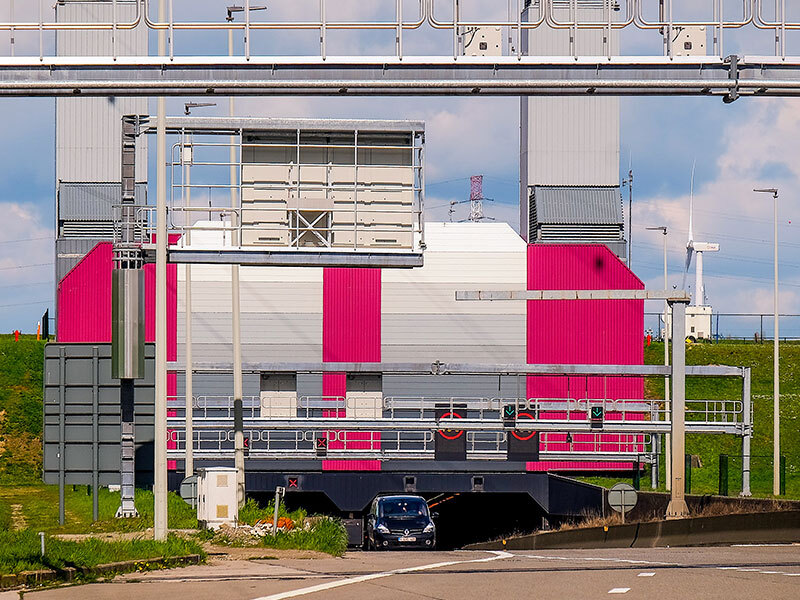Complex project eastern connection
21061 23012
From 2022 to 2025
TML is carrying out a study of the eastern part of the Harbour route, from the Wommelgem interchange to the junction of the R2 with the A12, with the aim of improving the traffic structure in the Antwerp region and promoting sustainable mobility. TML focuses on mobility research, including model calculations and cost-benefit analyses, and collects views from stakeholders to formulate a preferred alternative for the route.
This study involves researching alternatives and the development of a preferred alternative for the eastern section of the Harbour Route. This is the segment from the Wommelgem interchange to the junction of the R2 with the A12. We examine the following elements:
The Harbour Route is part of the so-called Future Association. It is a route around the city intended for port traffic and through traffic. The Future Association consists of a large, diverse group of stakeholders striving for a good balance between liveability and mobility. The aim of the research phase is primarily to arrive at a clear choice about the infrastructural eastern stretch of the port route, including the improvement of existing situations (e.g., traffic congestion, barriers, road safety, etc.). In addition, the aim is to explore the promising options to integrate this road infrastructure with the infrastructure for the sustainable transport modes. Another general objective is to explore and investigate possibilities and preconditions regarding a spatial (landscape) concept and then make a substantial contribution to improving the environmental quality and liveability in the area east of Antwerp.
In this study, we gather the views of all stakeholders and objectify and substantiate the concerns and positive effects of the alternatives to weigh them against each other and formulate a preferred alternative. First, the alternatives research note is prepared, identifying the various technically feasible alternatives. After consulting the advisory bodies, processing the public comments and the cost-benefit analysis (CBA), a preferred alternative is worked out.
Within this project, TML is responsible for an important part of the mobility study, including the steering of model calculations with both the strategic models and the MDVM, the interpretation of their results, and the cost-benefit analysis.
Researcher Kristof, together with colleagues from Sweco, provided further explanation to the hundreds of interested people at the info market. Read the article here (Dutch only).
This study involves researching alternatives and the development of a preferred alternative for the eastern section of the Harbour Route. This is the segment from the Wommelgem interchange to the junction of the R2 with the A12. We examine the following elements:
- The role of the Harbour Route in improving the traffic structure in the Antwerp region and its contribution in achieving modal shift.
- How the bundling of road infrastructure with infrastructure for sustainable mobility can be done.
- How the infrastructure can be integrated into an area vision that improves environmental quality and responds to climate challenges.
The Harbour Route is part of the so-called Future Association. It is a route around the city intended for port traffic and through traffic. The Future Association consists of a large, diverse group of stakeholders striving for a good balance between liveability and mobility. The aim of the research phase is primarily to arrive at a clear choice about the infrastructural eastern stretch of the port route, including the improvement of existing situations (e.g., traffic congestion, barriers, road safety, etc.). In addition, the aim is to explore the promising options to integrate this road infrastructure with the infrastructure for the sustainable transport modes. Another general objective is to explore and investigate possibilities and preconditions regarding a spatial (landscape) concept and then make a substantial contribution to improving the environmental quality and liveability in the area east of Antwerp.
In this study, we gather the views of all stakeholders and objectify and substantiate the concerns and positive effects of the alternatives to weigh them against each other and formulate a preferred alternative. First, the alternatives research note is prepared, identifying the various technically feasible alternatives. After consulting the advisory bodies, processing the public comments and the cost-benefit analysis (CBA), a preferred alternative is worked out.
Within this project, TML is responsible for an important part of the mobility study, including the steering of model calculations with both the strategic models and the MDVM, the interpretation of their results, and the cost-benefit analysis.
Researcher Kristof, together with colleagues from Sweco, provided further explanation to the hundreds of interested people at the info market. Read the article here (Dutch only).


